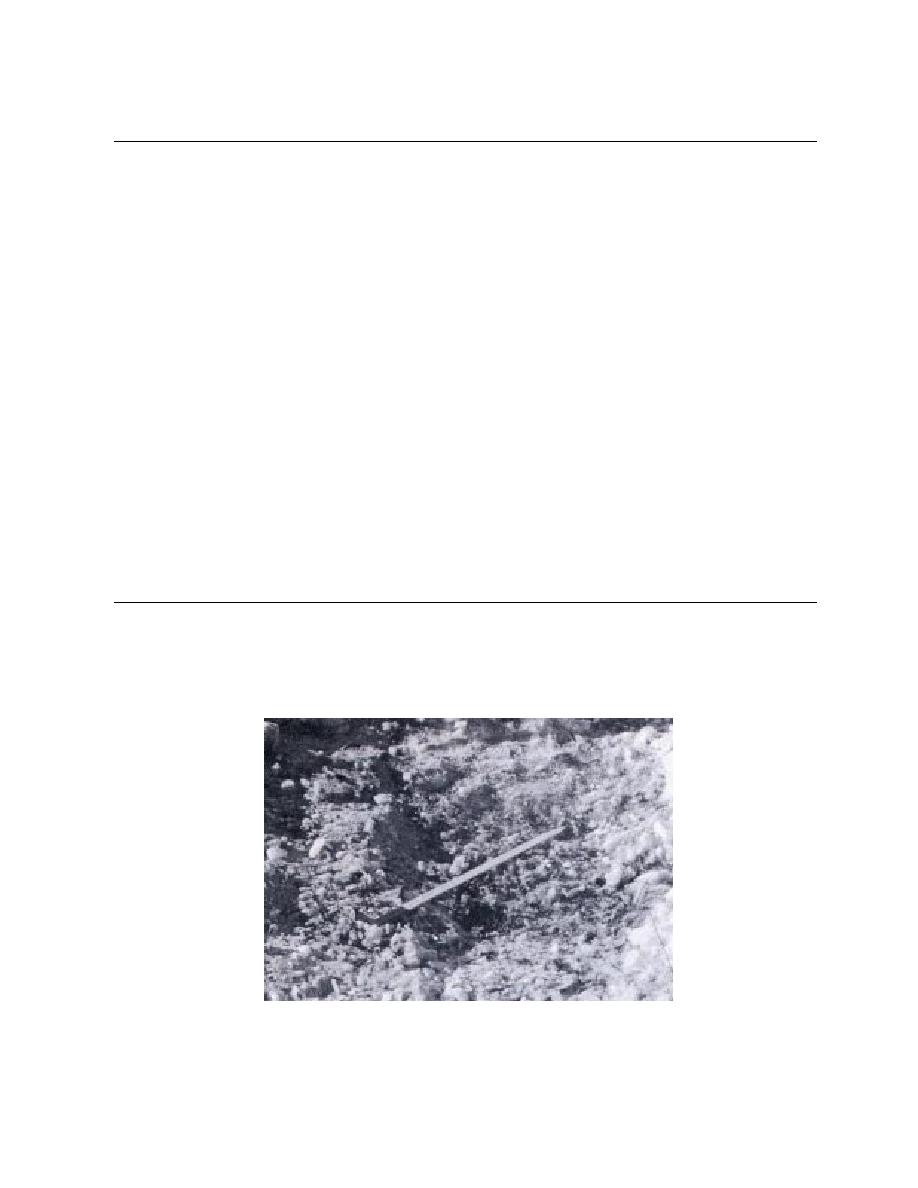
Table 3. Measurement data from craters.
Maximum
Minimum
Center
Snow
Crater no.
Description
axis (m)
axis (m)
depth (m)
depth (m)
Notes
105-mm howitzer
1
PD
2.26
1.89
0.30
0.20
1.2- 0.6-m area of ground exposed
2
PD
2.90
2.10
0.44
0.20
at bottom of crater.
3
PD
3.29
2.50
0.37
0.20
4
PD
3.38
2.32
0.39
0.20
5
PD
3.20
2.77
0.30
0.20
6
PD
3.63
2.50
0.27
0.20
0.6-m area in center where ice shattered.
7
D
1.07
0.61
--
Point where projectile ricocheted.
9
PD
3.54
3.05
0.20
0.20
0.6-m area of shattered ice in center.
8
D
7.62
2.44
0.20
0.20
Shallow, elongated crater. Ricocheted
projectile blew up near surface.
10
D
3.00
2.40
0.35
0.20
81-mm mortar
1
PD
2.59
2.29
0.15
0.15
Bottom of crater is on top of ice sheet.
2
PD
2.49
2.29
0.16
0.15
3
PD
2.26
1.86
0.16
0.15
4
D
1.83
1.83
0.17
0.15
5
D
Camouflet
Not measured.
0.6- 2-m mound of ice rubble. 0.6-m-diam
6
D
Camouflet
approx. 1.8-m-deep crater hidden under
rubble.
60-mm mortar
1
PD
1.83
1.83
0.21
0.21
Depth of crater is equal to depth of snow
on ice sheet, i.e. bottom of crater is top of
ice sheet.
2
PD
1.83
1.52
0.15
0.15
0.10-m-diam 0.08-m-deep hole in ice in
3
PD
1.80
1.89
0.18
0.18
exact center. Fuse parts in hole.
4
PD
1.83
1.52
0.22
0.20
5
PD
1.83
1.83
0.17
0.17
* PD = point-detonating fuse
D = delay fuse.
Figure 4. Ice lifted out of the bottom of crater no. 2, exposing frozen
ground.
6



 Previous Page
Previous Page
